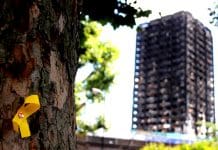New BSI standards published this week have set out competence requirements for building safety management, supporting industry reform in tandem with the DLUHC
The UK National Standards Body has published three new BSI standards this week (27 July 2022), outlining competence requirements for building safety management, including Principal Designers and Principal Contractors.
The standards support industry reform, in line with the new Building Safety Act, and are intended to minimize safety risks and improve protection to consumers and occupants, including residents, in and about buildings.
The new BSI standards- also known as PASs- are designed to guarantee that occupants can have confidence in their buildings and immediate environment and that safety is a priority. Ensuring the competence of service providers and products throughout the life of a building is an essential part of this process.
The PASs are published as part of the government-funded Built Environment Competence programme. They have been developed by three Steering Groups made up of built environment professionals, including the Chartered Institute of Building, the Royal Institution of Chartered Surveyors and British Approvals for Fire Equipment (BAFE).
Topics covered include handling higher-risk buildings, managing safety in residential buildings and maintain the golden thread
The new standards have been published based on the core competence criteria set out in BSI Flex 8670 v3.0 and are as follows:
Built environment – Framework for competence of individual Principal Designers – Specification specifies competence thresholds that individuals are expected to meet when delivering or managing the dutyholder functions of the Principal Designer, and additional competencies for working on higher-risk buildings (HRBs). Areas of competence include appropriate behaviour; management of design work compliance; legislative and regulatory framework for compliance; and technical framework for compliance.
Built environment – Framework for competence of individual Principal Contractors – Specification specifies competence requirements for the dutyholder role of Principal Contractor. It also describes specific competences common to all Principal Contractors and those which are additional for those undertaking the role on HRBs. It covers roles and responsibilities; additional competences for higher risk buildings; skills, knowledge and experience; behaviours and ethics; and limits of competence.
Built environment – Competence requirements for the management of safety in residential buildings – Specification specifies competence requirements for managing safety in residential buildings and other developments incorporating residential accommodation. It also gives guidance on detailed competencies and the assessment of competence. It covers competence and commitment in regard to building structures and building systems, including building services; operational practices necessary to maintain buildings safe for occupants; interaction of systems and components; risk management; managing the golden thread of information, including other digital information; leadership, communication and planning skills; managing change, including the consequences of human behaviour; and personal commitment to ethical behaviour and professional standards.
Building trust and better building safety standards across the industry
A DLUHC spokesperson stated:
“For people to feel safe in their homes they must trust those responsible for building them. These new requirements support our mission to drive better building safety standards across the construction industry, together with the tough new regulatory regime we introduced in the Building Safety Act.
“We are pleased to see industry taking action to improve competence beyond their legal obligations, which is key to rebuilding confidence in the sector.”
Scott Steedman, director-general of Standards at BSI said:
“We are delighted to announce the launch of three new standards, published as part of BSI’s Built Environment Competence Standards (BECS) programme, to provide an agreed, common approach for industry to embed building safety competence for design, construction and building management at a senior level.
“This is a major step forward which has the potential to support real change in the industry understanding of building safety in the years and decades ahead.”
The standards can be downloaded at no cost here.













